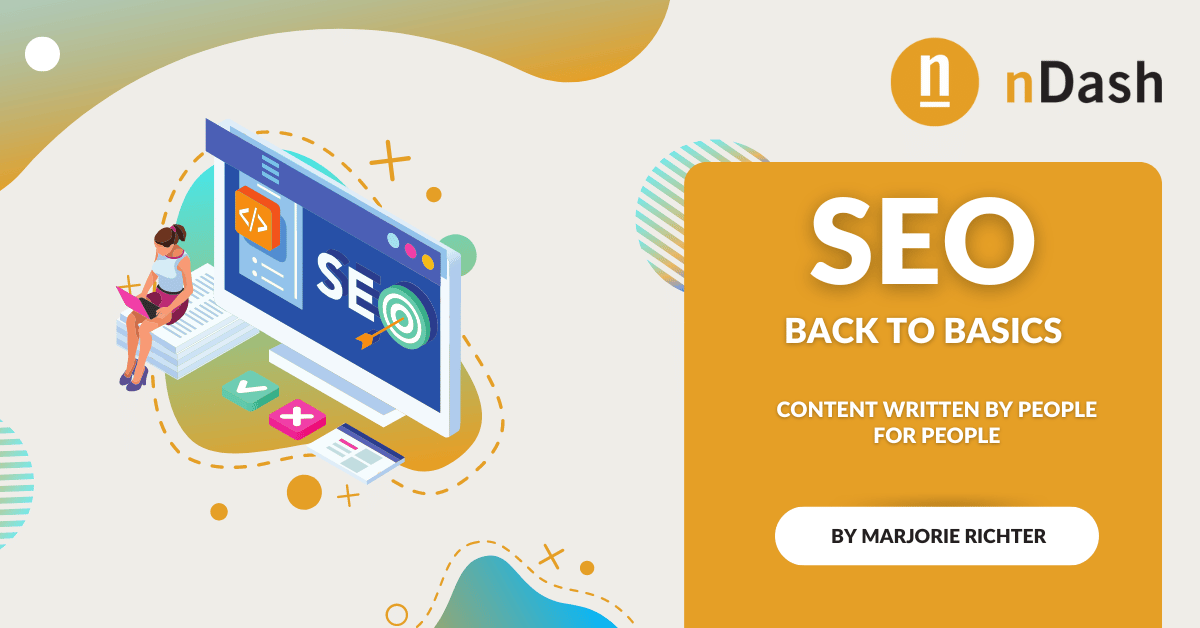In August 2022, Google announced the “helpful content update.” The purpose was to help ensure that Google search engine users see more “original, helpful content written by people, for people.” What does that mean for SEO strategies?
“By people” means written by humans, as opposed to by AI robots, whose writing, at least so far, has been dismal. “For people” means not aiming primarily at ranking well in search engine results, without much or any consideration given to how the content will benefit the people who read or watch it.
SEO Still Matters – If It’s the Right Kind
And yet, Google is not giving up on search engine optimization (SEO) altogether. In the same announcement, they write that the “people-first approach” doesn’t “invalidate following SEO best practices.” Then, they specifically mention the best practices covered in their own guide – The Search Engine Optimization (SEO) Starter Guide – as an example of the type of SEO they consider helpful “when it’s applied to people-first content.”

Google’s guide provides a “complete overview of the basics of SEO.” It’s also long – about 37 pages if you print it out – so that’s a lot of basics to digest. Here, I’m highlighting the guide’s key points for writers, marketers, and others involved with creating content.
Some of the guide’s advice is technical, aimed mostly at developers and designers, such as:
- adding structured data markup
- structuring HTTP to HTTPS
- making it easy for users to navigate through the site’s pages
- having useful 404 pages
- creating descriptive and simple URLs
- using responsive web design for mobile
- providing information on who publishes the site
- providing customer service information
- figuring out where to place ads.
From here on, I’ll just be focusing on what the guide has to say about the content itself.
What Google Says Is the Single Most Important Thing for Your Website’s Success
Google wants us, as content creators, to be interesting. “Make your site interesting and useful,” the guide proclaims. “Creating compelling and useful content will likely influence your website more than any of the other factors discussed here.”
Sounds great. Be interesting! Sure, that will work. But wait. It’s easy enough to say, but how do you do it? It’s like if someone says the secret to a satisfying life is to be happy. Okay, that’s nice, but then what?
I’m not the only one with that question. I did a Google search for “how to be an interesting writer” and got 1.6 billion results.

That’s 5.3 results for every person in the U.S. and one result for every 4.5 people in the whole world (hope they are willing to share). That’s a whole lot of people who are trying to puzzle out this riddle.
I won’t go through billions of answers but will just offer two suggestions.
1. Be Curious
Through the magic of writing and reading, a writer’s emotions often get transmitted to readers. It’s why people cry when reading sad stories. Most content marketing pieces are nothing like tear-jerker novels, but your state of mind may be infectious even when writing material that is factual and informative.
If you’re bored with the material while writing, your readers are likely to be bored as well (unless the information is crucial for their well-being). On the flip side, if you’re interested, then readers are more likely to be interested too.
Enthusiasm is contagious, but if you can’t crank up your emotions quite that high, consider approaching your work with curiosity. That, too, will spark readers’ interest. When choosing topics, think about questions where you’d like to find out the answers.
If your topics are assigned to you, then you may need to dig deeper to find out what makes them interesting. Think of it this way: Even the driest topic is interesting to someone. Write for that someone.
2. Imagine you’re writing to a single person
For many writers, it’s easier to write in a way that connects with readers if they imagine they are writing to one specific person rather than to a vast, faceless crowd. That person can be real or imaginary.
If you are working with an agency or marketing department that uses buyer personas, you have ready-made imaginary people to write to. If you don’t, you can conjure up your own buyer persona and make it someone who is keenly interested in your topic.
Keyword Stuffing is Out, But Keywords Are Still Okay
Keyword stuffing has a well-deserved bad reputation. But the Google guide shows that the company still wants content creators to use keywords that will match terms that people search for. In fact, they suggest using a mix of keyword phrases to appeal to different users. They also recommend their Keyword Planner and the Search Console’s Performance Report.
Don’t Do These Things!
Google warns against some bad practices. Some of these are so terrible they should probably go without saying. For example, the guide says don’t:
- Make a lot of spelling and grammatical mistakes.
- Use poorly written or awkward content.
- Have large blocks of text without any paragraph breaks, subheadings, or other separations.
- Use a lot of “annoying or nonsensical” and unnecessary keywords.
- Be sneaky by making text invisible to users but visible to search engines.
Know What You Are Writing About
The guide says, “Be sure that the content on your site is created or edited by people with expertise in the topic.” Sounds good, but does that create a problem for generalist writers who are not necessarily experts in every subject they cover?
I think the answer is to aim for accuracy. If there’s something you don’t know, find out from someone who does. Be scrupulous about which people and websites you consult.
Best Practices for Elements, Tags, and Links
Much of Google’s advice in the guide is general, almost abstract: Be useful! Be interesting! But when it comes to elements, tags, and links, the guide gets very specific:
- The title element (which may show up as the title link in search results) should describe the page’s topic. The homepage title element may include the name of the business and other information, such as location.
- The title element should be concise.
- Meta description tags (which may show up as snippets in search results) should summarize the content of the page.
- Every page should have a unique title element and unique meta description.
- Anchor text in links should be short and descriptive.
Most of the suggestions in the guide are basic, as Google says, and many seem like common sense. But it’s good to return to basics. SEO tactics can get very elaborate as people try to game Google’s algorithms in increasingly complex ways. Eventually, Google catches up and issues new updates to block the attempts, and the cycle repeats.
It’s simpler, more enjoyable, and, ultimately, more effective to focus on user satisfaction. As the guide shows, though, we can’t forget about the algorithm completely. We still need to feed it with relevant, helpful keywords, organized sites and pages, and descriptive elements and tags. But (barring a science-fiction-y scenario where AI takes over the world), the needs of people are more important than the needs of machines — even when it comes to Google searches.
 About the author:
About the author:
Marjorie Richter is a freelance writer specializing in legal, finance, and humor. She writes mostly website copy and blog posts to enhance her clients’ online visibility. Check out her profile to see how she can help with your content creation needs.

